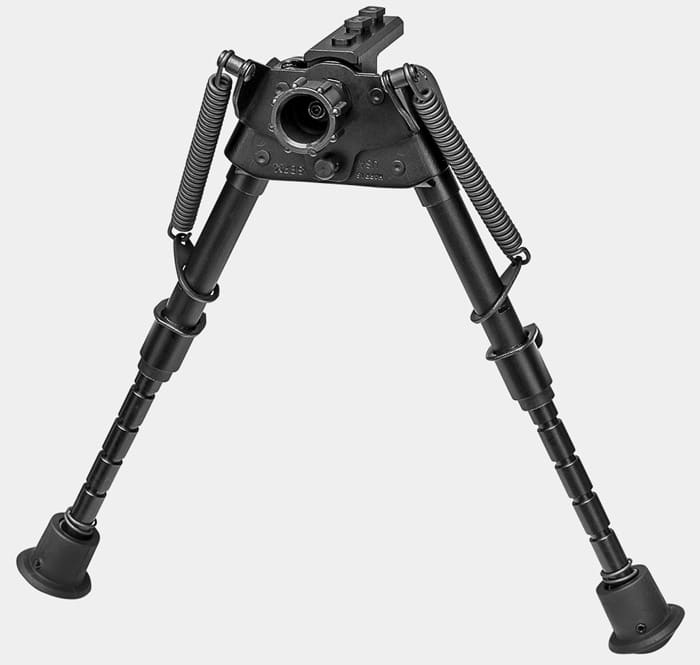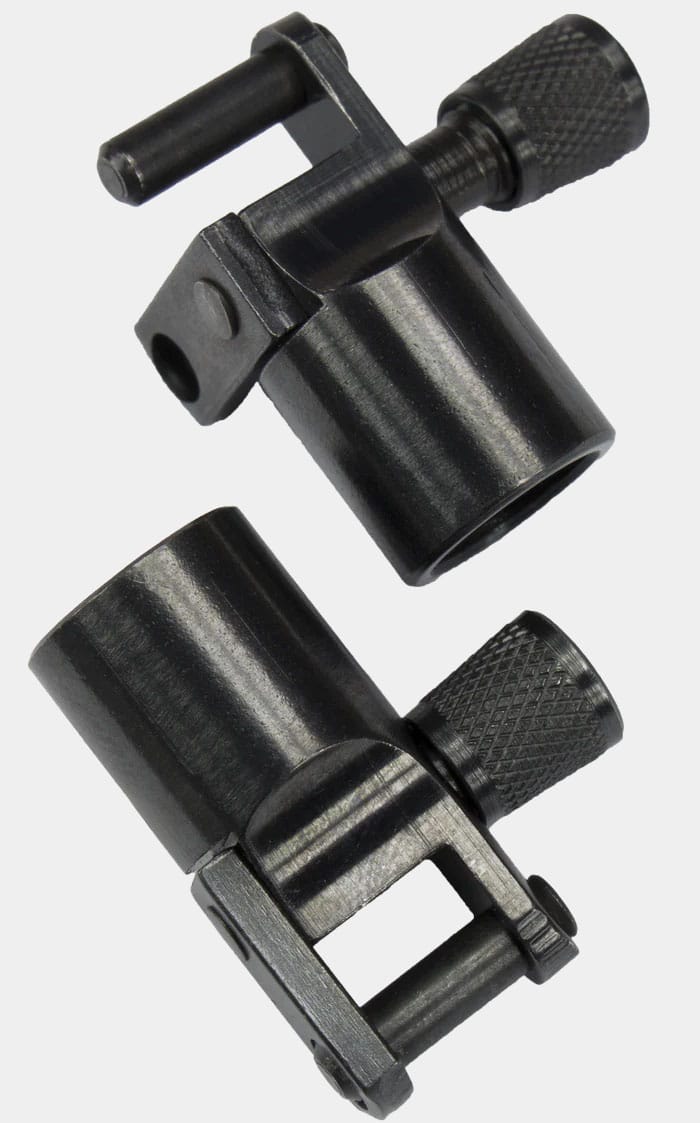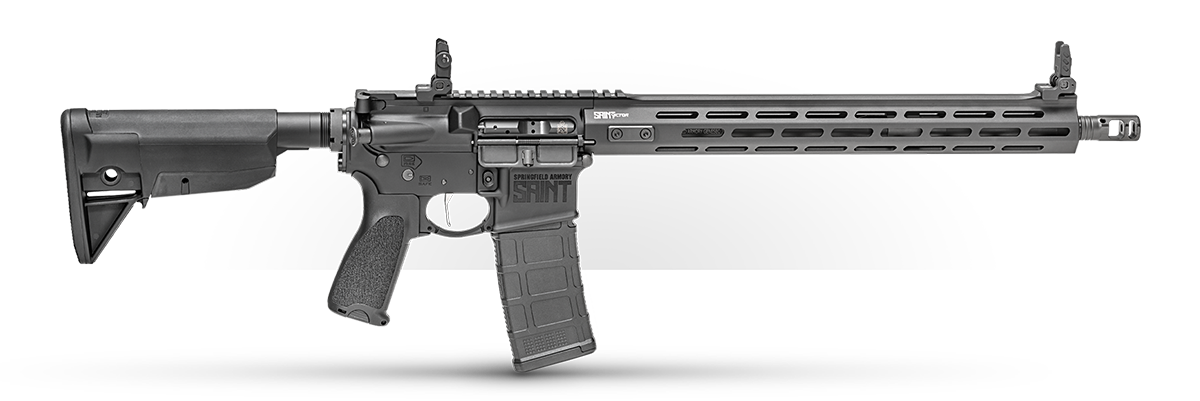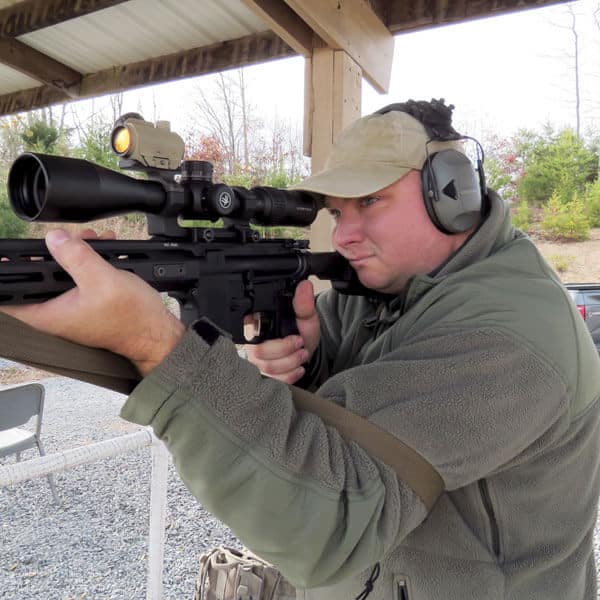Harris S-BRM M-Lok Bipod Review
August 11th, 2023
6 minute read
Some say that Harris Bipods were already an accessory option when the rifled musket was invented. For decades, Harris Bipods have been a mainstay accessory in the firearms community for providing robust bipods that have seen use on police, military and civilian rifles.
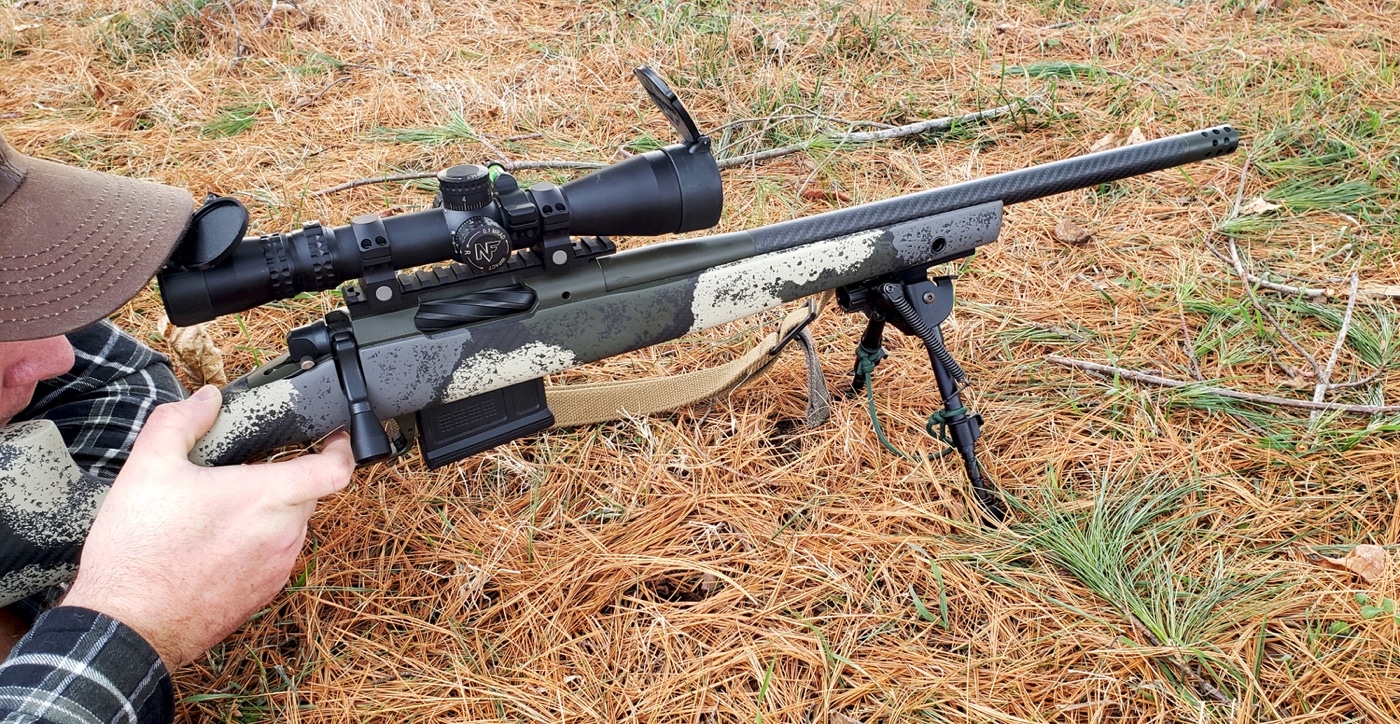
As capable as the Harris bipods were, as accessories went modular Harris was frankly a bit slow to update their bipods and an adapter was needed to attach it to Picatinny and M-Lok sections. However, they have addressed that and it’s now possible to get Harris bipods with built-in adapters so the bipod can be mounted directly to a modular rail.
Harris Bipods was kind enough to send me a S-BRM-MLOK Bipod 6”-9” bipod for review and evaluation.
[Learn more about methods of attaching accessories in the article What Is M-Lok?]
The Basics
Nearly every quality bipod that I use has some core attributes such as extendable, notched legs and a method to allow the bipod to swivel from side to side. Notched legs allow me to make quick, positive height adjustments with one hand that won’t inadvertently release under recoil. Bipods that have smooth legs use a tension knob to keep the leg in place, which I’ve had suddenly collapse because the knob shot loose.
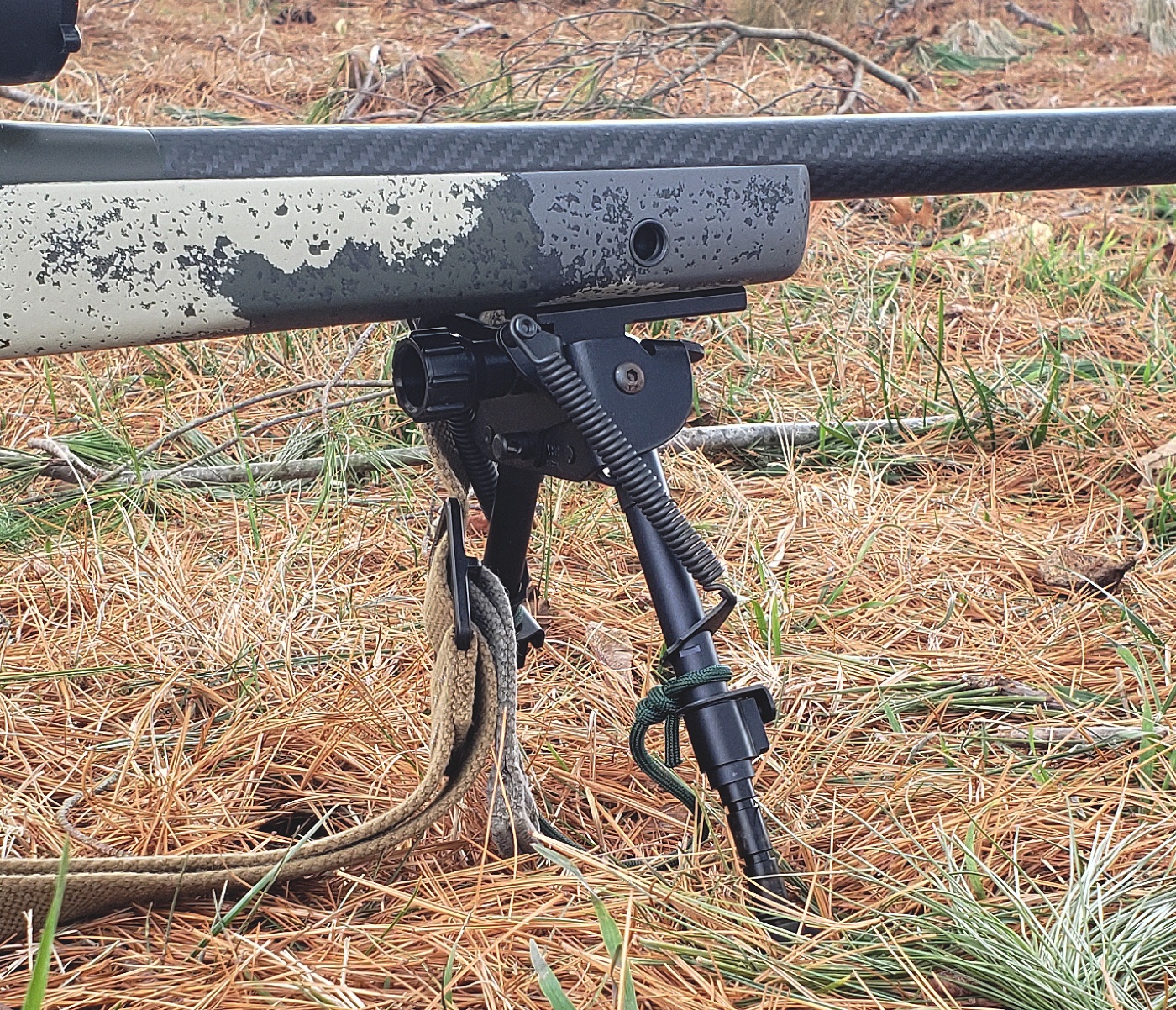
Since the world isn’t flat, it’s useful to have a swivel feature to compensate for uneven terrain without relying on the gross adjustments of the bipod legs and then just “dealing” with it. If the rifle is tilted too much in relation to the target, it can have adverse effects on the trajectory.
New Harris Bipods
When choosing a bipod for this article, I selected the 6”-9” height bipod because, over time, I’ve found that height to be the most versatile for me in most situations across multiple platforms. In a bolt-gun, it allows me to get into a low and stable position. Also, it works well with an AR-15 as long as I’m using a shorter 20-round magazine. If you’re planning to use a 30-round magazine, then I’d recommend the taller 9-13” height bipods.
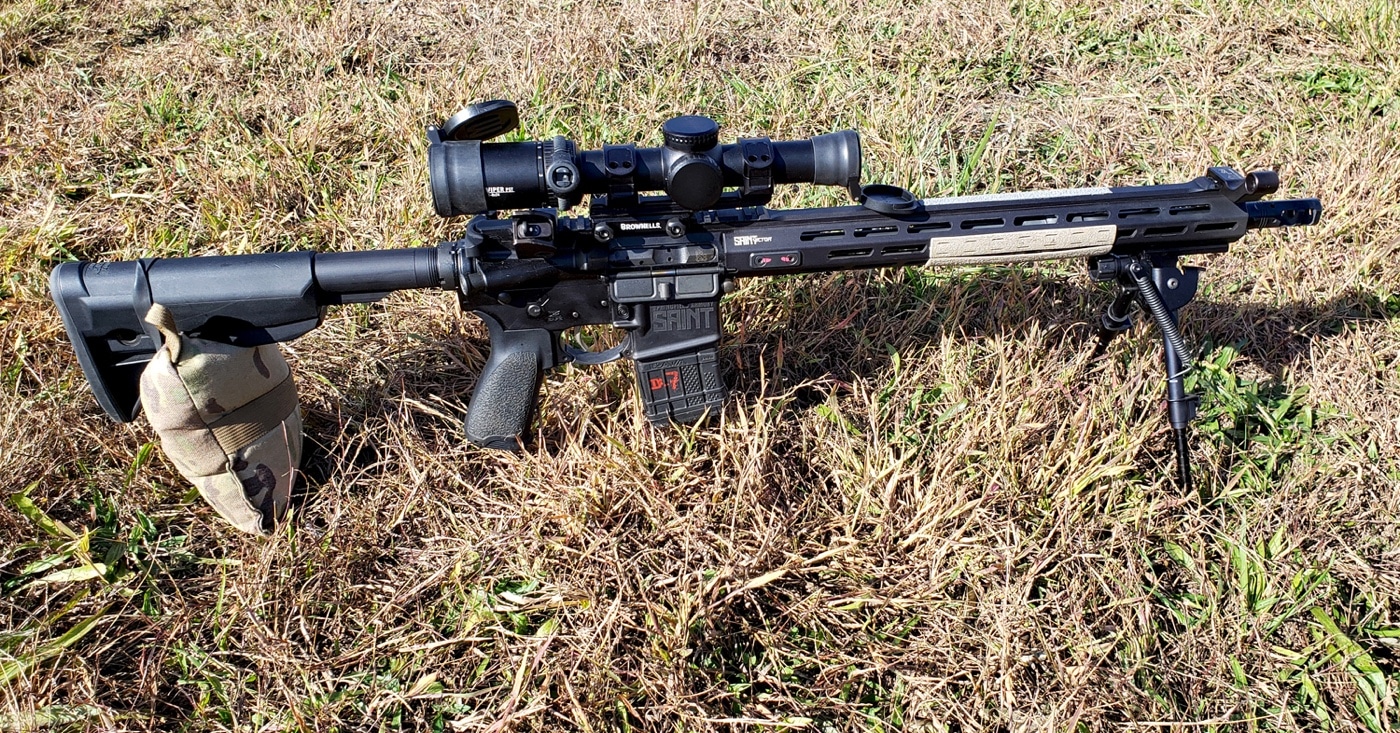
The upgraded Harris bipod replaces the original mounting and swivel hardware with a built-in M-Lok mount, eliminating the need to make it work by stacking accessories. In years gone by, I would’ve needed an adapter if I wanted to mount the bipod directly. If I wanted to make it QD, I would’ve needed an accessory rail and a bipod adapter. I can now simply attach the bipod directly to the handguard of my SAINT Victor or to the underside of the Waypoint 2020 with no muss, no fuss. Direct mounting to the rifle also keeps the bipod closer to the stock or handguard for a more low-profile look.
The integrated adapter is finely machined from aluminum and anodized a matte black that matches the bipod well. Black oxide t-nuts and bolts with applied thread locker, very much like Magpul’s M-Lok accessories, are used for attachment and appear to be good-quality fasteners. I am confident that this hardware will be able to stand up to use and abuse.
The traditional knurled nut on the back of a swivel Harris bipod has been replaced with a polymer knob that makes it easier to put tension on the swivel mechanism. My older bipods required a pair of pliers to turn them, but now I can do it with my fingertips.
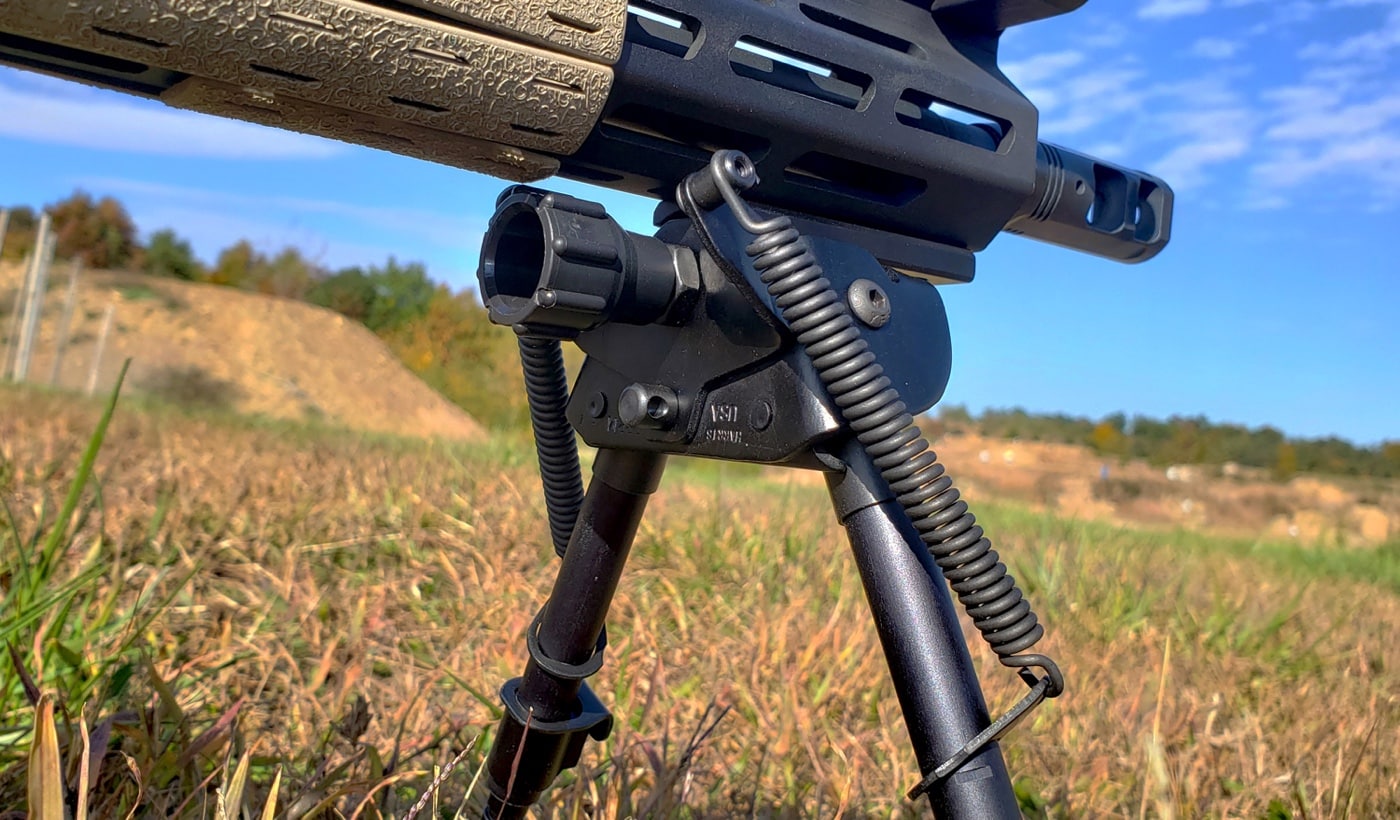
I’d like to note that it doesn’t appear the knob is really a “lock” where the bipod doesn’t move at all if it’s tightened all the way. That being said, with that knob tightened as best I can with just my fingers, it is the right amount of tension for me to move the bipod with mild pressure, and it stays there.
Behind the Gun
I mounted the bipod on my Springfield SAINT Victor and Springfield Waypoint 2020. At the range, I can’t say there were any surprises as I shot out to 500 yards — steady is as steady does. I did have to play with the positioning of the bipod along the Victor’s rail until I found the sweet spot where I could make adjustments without breaking position while still having enough room for my hand. I also had to be cognizant of the M-Lok hardware and ensure it didn’t touch the gas block and potentially cause accuracy issues.
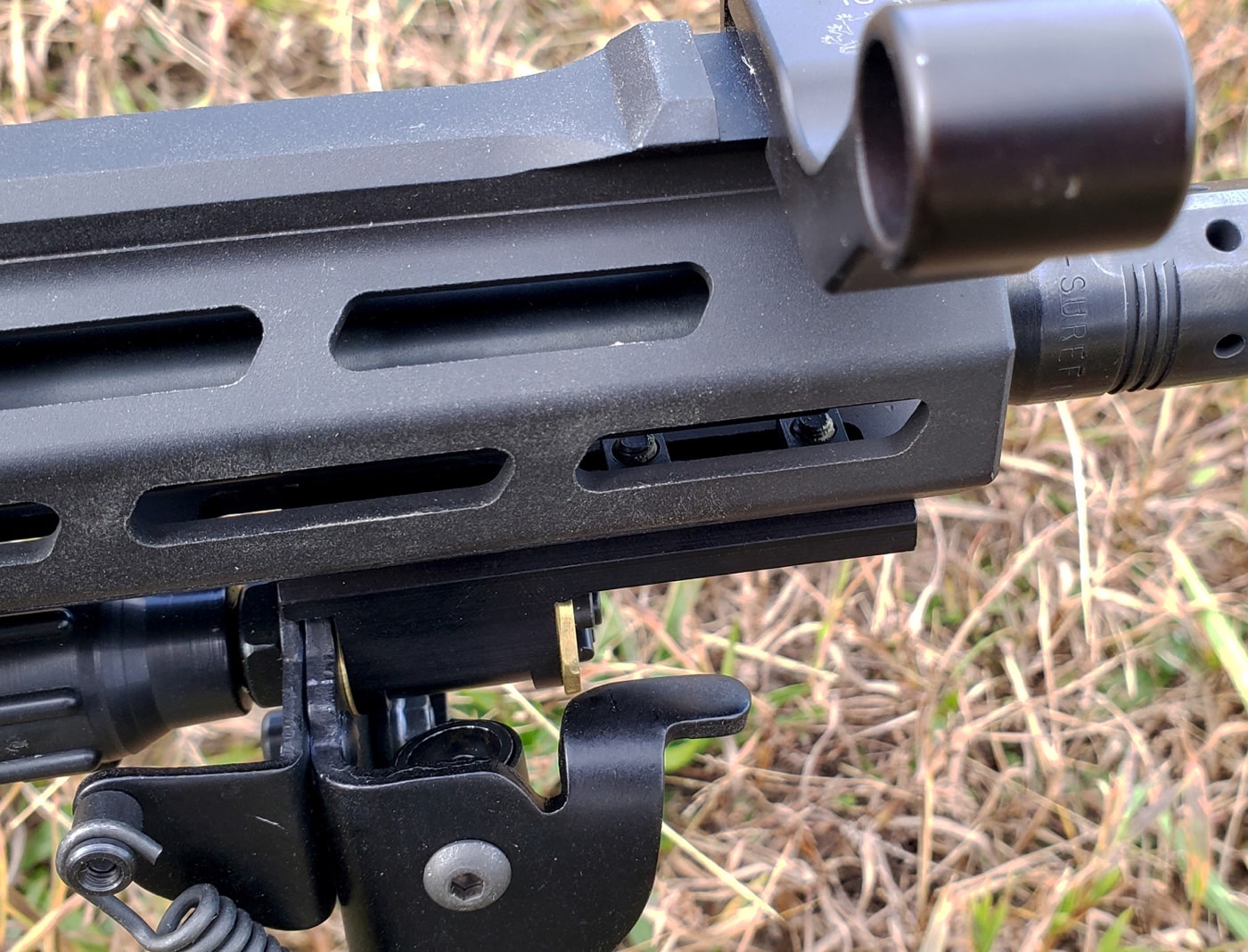
As I mentioned before, for an AR-15, the 6-9” height is borderline too low, and depending on the terrain, it may not work at all. I ran into this on my first range trip, where my shooting position was on a slight downslope, and the targets were on a slight upslope. Even with a 20-round magazine, it was a bit of a struggle to elevate the front enough to get the reticle on target. It would’ve been impossible with a 30-rounder. On flat terrain, though, or off of a shooting bench rest, this bipod would be perfectly acceptable. It will all come down to what you’re shooting and the situation.
The Waypoint was a little different story, and I felt this particular bipod was perfectly paired with that rifle. The bipod’s height wasn’t a hindrance, it was easy to reach the leg adjustments, and I appreciated that it was up close to the stock and out of the way. The recoil of a 6mm round isn’t much, and slightly loading the bipod forward kept my reticle on the target.
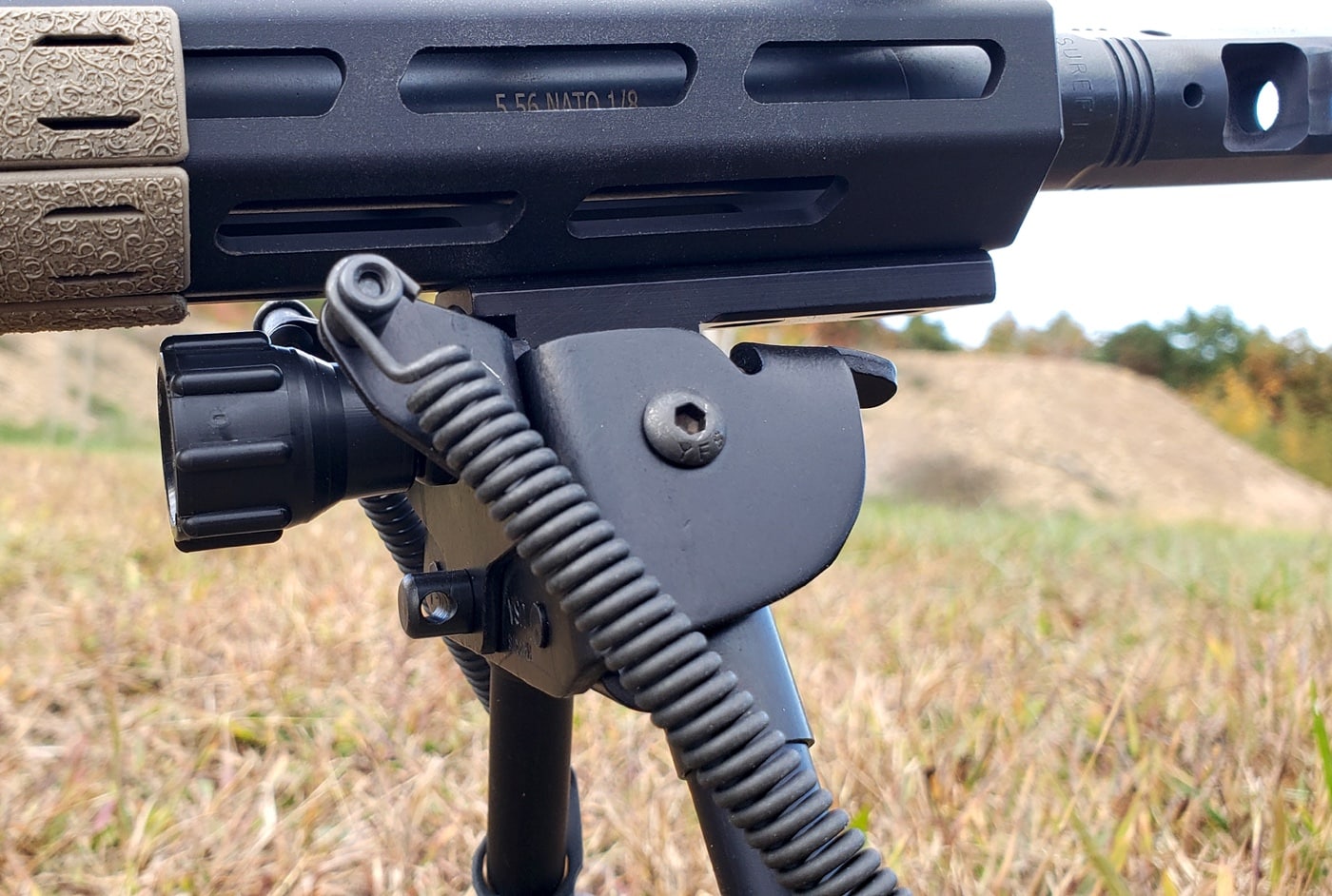
Maybe the only downside is that even with the bipod mounted all the way forward, the tension knob extends far enough back to keep me from using an M-Lok sling mount on the underside. Grovetec makes an adapter that attaches to the sling swivel in the back of the bipod that allows me to use a QD sling swivel in case I just had to have a sling mounted on the bottom. The part number for it is GTSW235.
Bipod Hack
A simple modification that can be done to a Harris bipod is to bridge the two bipod legs with a piece of 550 cord. Since the legs are spring-loaded, the cord can be used as a pull string to quickly deploy both legs simultaneously when getting into a position. Obviously, this isn’t something that’d be used all the time, but if seconds count, it could be a worthy addition to the bipod.
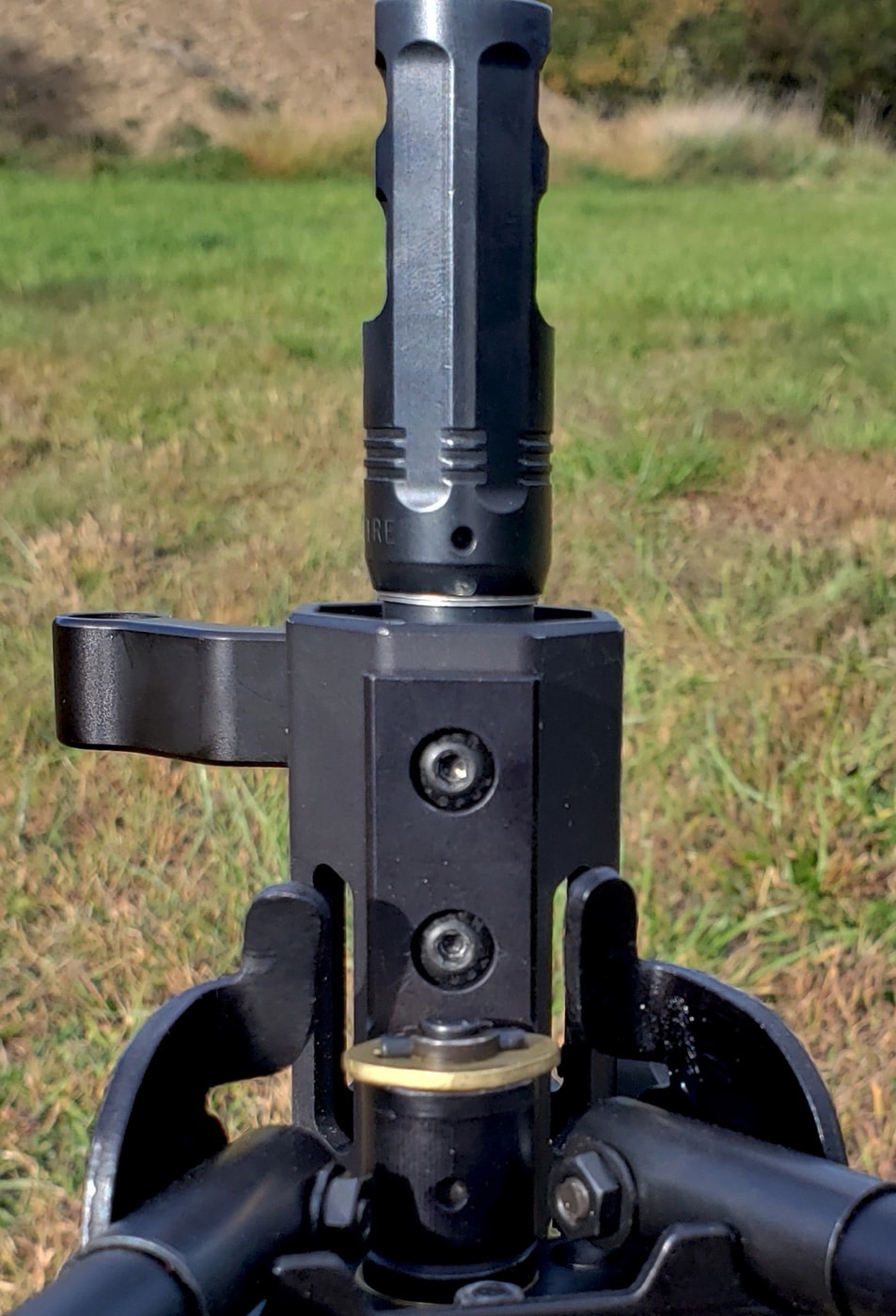
There are multiple variations on the theme and how to tie the 550 cord off, but usually, it’s a piece about 12”-24” long, with a longer length being for adding a pull loop in the center.
Closing Thoughts on the S-BRM
The Harris bipod is like an old six-shooter or pump-action shotgun; the technology is old, and there might be more modern solutions, but it still holds up in today’s environment just as it always has. I think the Harris bipods, especially these upgraded models, occupy a middle ground in the market that would appeal to many shooters.
It’s more expensive but definitely more durable than a polymer bipod, while being able to do much of the same stuff as bipods that cost twice as much. This is especially true if you want to outfit multiple rifles with a bipod and don’t wish to endure the sting of a $300 cost of entry for just one bipod. This bipod, model S-BRM-MLOK, is available from Harrisbipods.com for $148.25, not including shipping.
Editor’s Note: Be sure to check out The Armory Life Forum, where you can comment about our daily articles, as well as just talk guns and gear. Click the “Go To Forum Thread” link below to jump in!
Join the Discussion
Featured in this article
Continue Reading
Did you enjoy this article?

 36
36




